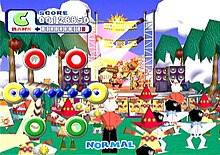
The Dreamcast is a home video game console released by Sega on November 27, 1998, in Japan; September 9, 1999, in North America; and October 14, 1999, in Europe. It was the first sixth-generation video game console, preceding Sony's PlayStation 2, Nintendo's GameCube, and Microsoft's Xbox. The Dreamcast was discontinued in 2001, ending Sega's 18 years in the console market.

Sonic Adventure is a 1998 platform game developed by Sonic Team and published by Sega for the Dreamcast. It was the first main Sonic the Hedgehog game to feature 3D gameplay. It follows Sonic the Hedgehog, Miles "Tails" Prower, Knuckles the Echidna, Amy Rose, Big the Cat, and E-102 Gamma in their quests to collect the Chaos Emeralds and stop Doctor Robotnik from unleashing Chaos, an ancient evil. Controlling one of the six characters—each with their own abilities—players complete levels to progress the story. Sonic Adventure retains many elements from prior Sonic games, such as power-ups and the ring-based health system. Players can play minigames such as racing and interact with Chao, a virtual pet.

Phantasy Star Online is an online role-playing game (RPG) developed by Sonic Team and published by Sega in 2000 for the Dreamcast. It was the first online RPG for game consoles; players adventure with up to three others over the internet to complete quests, collect items and fight enemies in real-time action RPG combat. The story is unrelated to previous games in the Phantasy Star series.

ChuChu Rocket! is an action puzzle game developed by Sonic Team and published by Sega. Released for the Dreamcast in 1999, it was the first game for the system to support online console gaming. Players must place arrows on a board to lead mice into escape rockets while avoiding cats. The game features single-player modes in which a player must save all the mice on a board, and a multiplayer mode in which players battle to collect the most mice.

Sonic Adventure 2 is a 2001 platform game developed by Sonic Team USA and published by Sega for the Dreamcast. It features two good-vs-evil stories: Sonic the Hedgehog, Miles "Tails" Prower, and Knuckles the Echidna attempt to save the world, while Shadow the Hedgehog, Doctor Eggman, and Rouge the Bat attempt to conquer it. The stories are divided into three gameplay styles: fast-paced platforming for Sonic and Shadow, multidirectional shooting for Tails and Eggman, and action-adventure exploration for Knuckles and Rouge. Like previous Sonic the Hedgehog games, the player completes levels while collecting rings and defeating enemies. Outside the main gameplay, they can interact with Chao, a virtual pet, and compete in multiplayer battles.

Sonic Shuffle is a Sonic the Hedgehog-themed party game developed and published by Sega for the Dreamcast in 2000. The game plays like a board game much in the same vein as Nintendo's Mario Party series, with up to four players moving their characters across a game board filled with a variety of spaces which can trigger different events. Some spaces will launch minigames that pit the players against each other in short competitive events.

Crazy Taxi is a series of racing games developed by Hitmaker and published by Sega. It was first available as an arcade video game in 1999, then released for the Dreamcast console in 2000. It is the third best-selling Dreamcast game in the United States, selling over a million copies. The game was later ported to the PlayStation 2, GameCube, and IBM PC compatibles with sequels also appearing on the Xbox, Game Boy Advance, and PlayStation Portable systems.

Virtua Striker is a series of association football sports video games released by Sega for arcades. Originally developed by Sega AM2 from 1994 to 1999, the series moved to Amusement Vision with Virtua Striker 3, but it later moved to Sega Sports Design R&D Dept. with Virtua Striker 4.

Sega Rally 2 is an arcade racing game developed by Sega for the Model 3 arcade hardware. It is the sequel to 1994's Sega Rally Championship. The game was first released in arcades in February 1998, and was later ported to the Sega Dreamcast, becoming one of the console's earliest titles when it was released in Japan on January 28, 1999. The Sega Dreamcast version was released in Europe as a launch title on October 14, 1999, and then in North America on November 27. A PC version was released in Japan and Europe that same year, with the North American release following suit in September 2000, where it was published by Mattel Interactive.
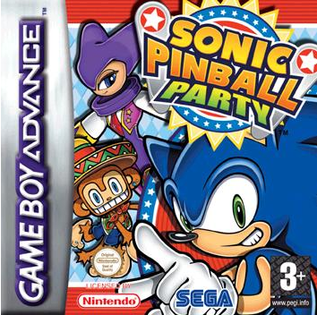
Sonic Pinball Party is a video game released for the Game Boy Advance in 2003. It is a celebration of sorts for Sonic Team featuring many references to its previous games, mostly prominently Sonic the Hedgehog, Nights into Dreams, and Samba De Amigo. There was also a release on a Twin Pack cartridge bundled with Sonic Battle and Sonic Advance respectively in 2005.

Sega Bass Fishing, known in Japan as Get Bass, is an arcade fishing video game developed in 1997 by Sega for the Sega Model 3 hardware. The game has since been ported to the Dreamcast, Microsoft Windows, Xbox 360, PlayStation 3 and Wii.

Sonic Riders: Zero Gravity is a hoverboard racing video game developed by Sonic Team and published by Sega for the PlayStation 2 and Wii. It is the fifth pure racing game in the Sonic the Hedgehog series, and the second entry in the Sonic Riders trilogy, a spin-off of the main series.

Mario & Sonic at the Olympic Winter Games is a 2009 sports and party game developed by Sega. Like its predecessor, it was published by Nintendo for Japan and Korea and by Sega in the Western world. The game is officially licensed by the International Olympic Committee (IOC) through exclusive license International Sports Multimedia. The game is the third official crossover title to feature characters from both Mario and Sonic's respective universes, the first and second being the game's predecessor Mario & Sonic at the Olympic Games and Super Smash Bros. Brawl respectively. It was released on the Wii and the Nintendo DS in October 2009, and is the first official video game of the 2010 Winter Olympic Games.

Sonic & Sega All-Stars Racing is a 2010 kart racing video game developed by Sumo Digital and published by Sega. It was released for Wii, Xbox 360, PlayStation 3, Nintendo DS, and Windows, featuring characters from multiple Sega franchises. The game is the third title in the Sega All-Stars series, preceded by Sega Superstars Tennis. A mobile version was developed by Gameloft, and released for iOS in June 2011, as a paid download. A version for OS X was released by Feral Interactive in April 2013.
Puyo Puyo (ぷよぷよ), previously known as Puyo Pop outside Japan, is a series of tile-matching video games created by Compile. Sega has owned the franchise since 1998, with games after 2001 being developed by Sonic Team. Puyo Puyo was created as a spin-off franchise to Madō Monogatari, a series of first-person dungeon crawler role-playing games by Compile from which the Puyo Puyo characters originated. The series has sold over 10 million copies, including the Madō Monogatari games.
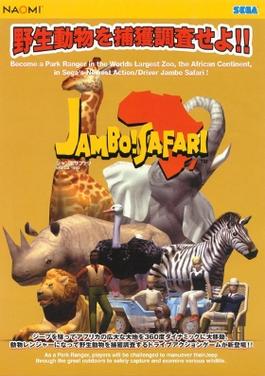
Jambo! Safari is a video game first released by Sega in 1999. The original arcade version of the game used the Naomi board, arcade hardware which was based on Sega's Dreamcast video game console. Even though other Naomi-based arcade games were, Jambo! Safari was never released for the Dreamcast. The UK version of the Official Dreamcast Magazine reported that the game was to be released in a 3-in-1 compilation along with other games in Sega's "Real Life Career Series", Brave Firefighters and Emergency Call Ambulance, but such a game was never released and neither of the other two games were ported either. Sega released versions of the game for the Wii and Nintendo DS, under the title Jambo! Safari: Animal Rescue on November 17, 2009.
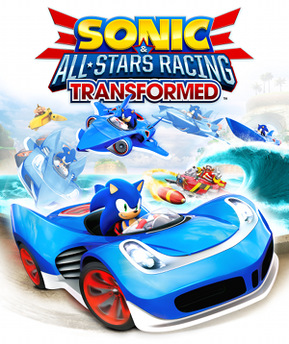
Sonic & All-Stars Racing Transformed is a kart racing video game developed by Sumo Digital and published by Sega. It was released for the PlayStation 3, Xbox 360, and Wii U in November 2012; for PlayStation Vita in December 2012; for Windows in January 2013; for Nintendo 3DS in February 2013; and for Android and iOS devices in January 2014. The PS3 and Wii U versions of the game were released in Japan on May 15, 2014.
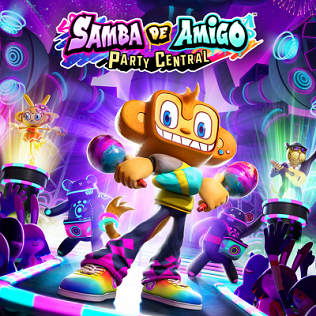
Samba de Amigo: Party Central is a motion-based rhythm game developed and published by Sega. The game is a sequel to Samba de Amigo and was released on the Nintendo Switch on August 29, 2023. In Samba de Amigo: Party Central, players shake their controllers like a set of maracas on time with the shapes on screen. In contrast to its predecessor, the game has less focus on Latin music and more on popular music genres in general.

